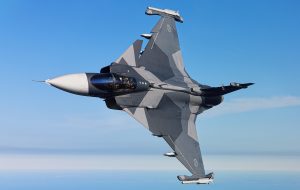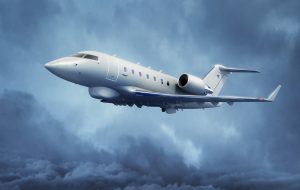Drones have become an integral part of the operations of many advanced armies in the world.
Reliance on drones has been increasing lately after their remarkable success in performing qualitative tasks that contributed to achieving rapid progress and victory over the enemy in many armed conflicts all over the world.
The extensive development of drones used in the military field, which are no longer the purview of superpowers, led to diversifying their uses and strengthening their combat capabilities by relying on the latest technologies and advanced artificial intelligence systems.
Today, drones have become a lethal weapon that attacks in swarms to ensure victory in battles.
With the acceleration of technological developments and the integration of artificial intelligence (AI) systems into drone operations, defense companies around the world have entered a great race to develop and innovate defense solutions that are compatible with every scenario and variable, and in this context, the Emirati company “HALCON”, which specializes in the development and production of precision guided munitions and unmanned aerial vehicles, stands out as a key player, credited with finding appropriate defensive solutions that meet the requirements of victory in wars.
Hunter 2-S Drone swarms
HALCON, which is a subsidiary of the Emirati EDGE Group, one of the top 25 defence contractors in the world, Has recently launched the Hunter 2-S swarming drone, which are expected to greatly affect battlefields in the future, by providing the armies with advanced tactical advantages across a series of combat scenarios and various tasks.
The Hunter 2-S UAV is an advanced, highly capable solution that relies on swarm strategy to achieve greater efficiency compared to operating in an uncoordinated mass.
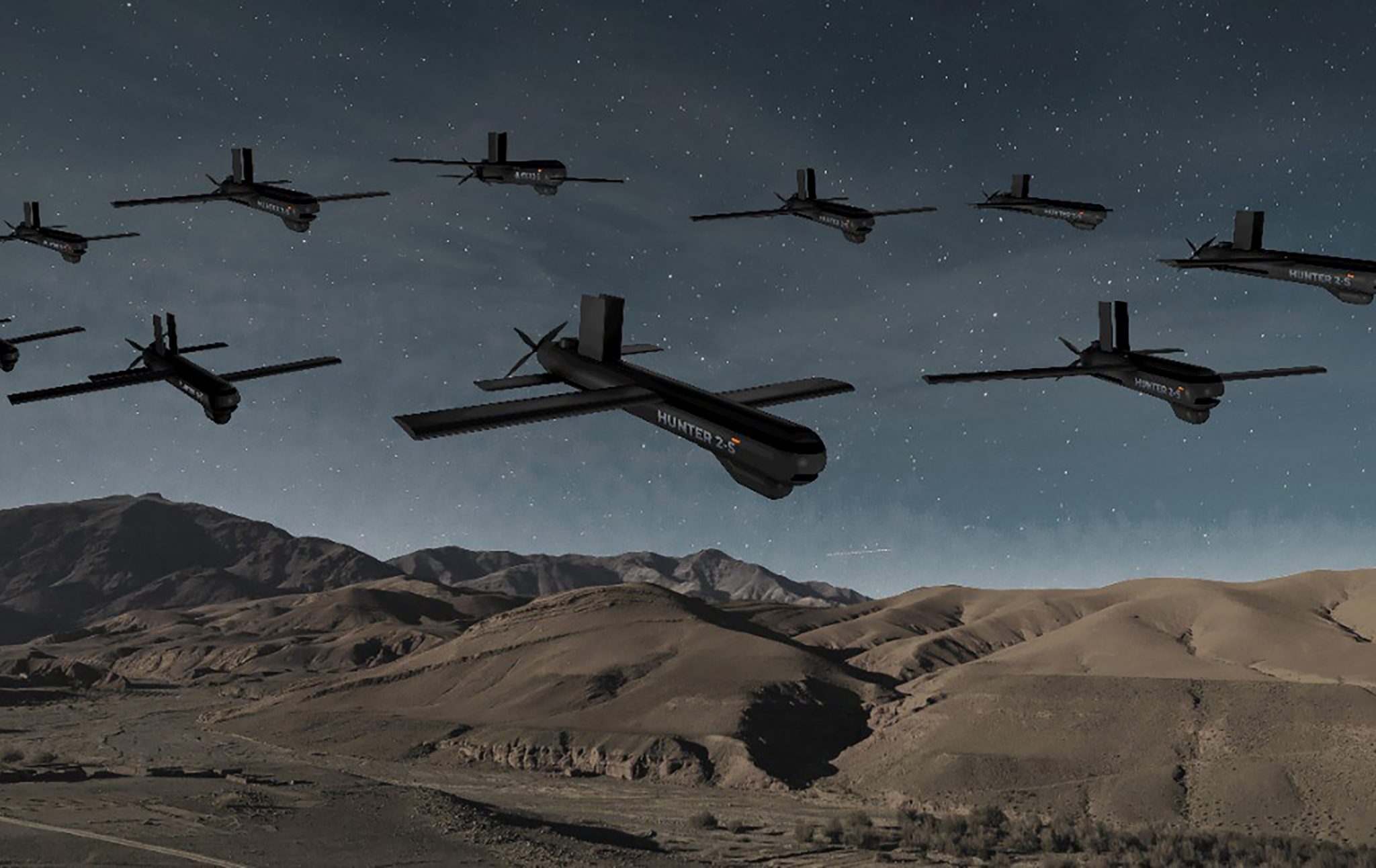
The Hunter 2-S is part of the Hunter family of single-use drones designed for attack, intelligence, surveillance, and reconnaissance (ISR) missions.
Features, specs, and uses
The Hunter 2-S uses 3D printed parts, specifically aerospace-qualified thermoplastic material, created using HALCON’s advanced in-house manufacturing capabilities.
The Hunter 2-S is a battery-powered, electric drone designed for attack, intelligence, surveillance, and reconnaissance (ISR) missions that carries a 2kg fragmentation warhead payload.
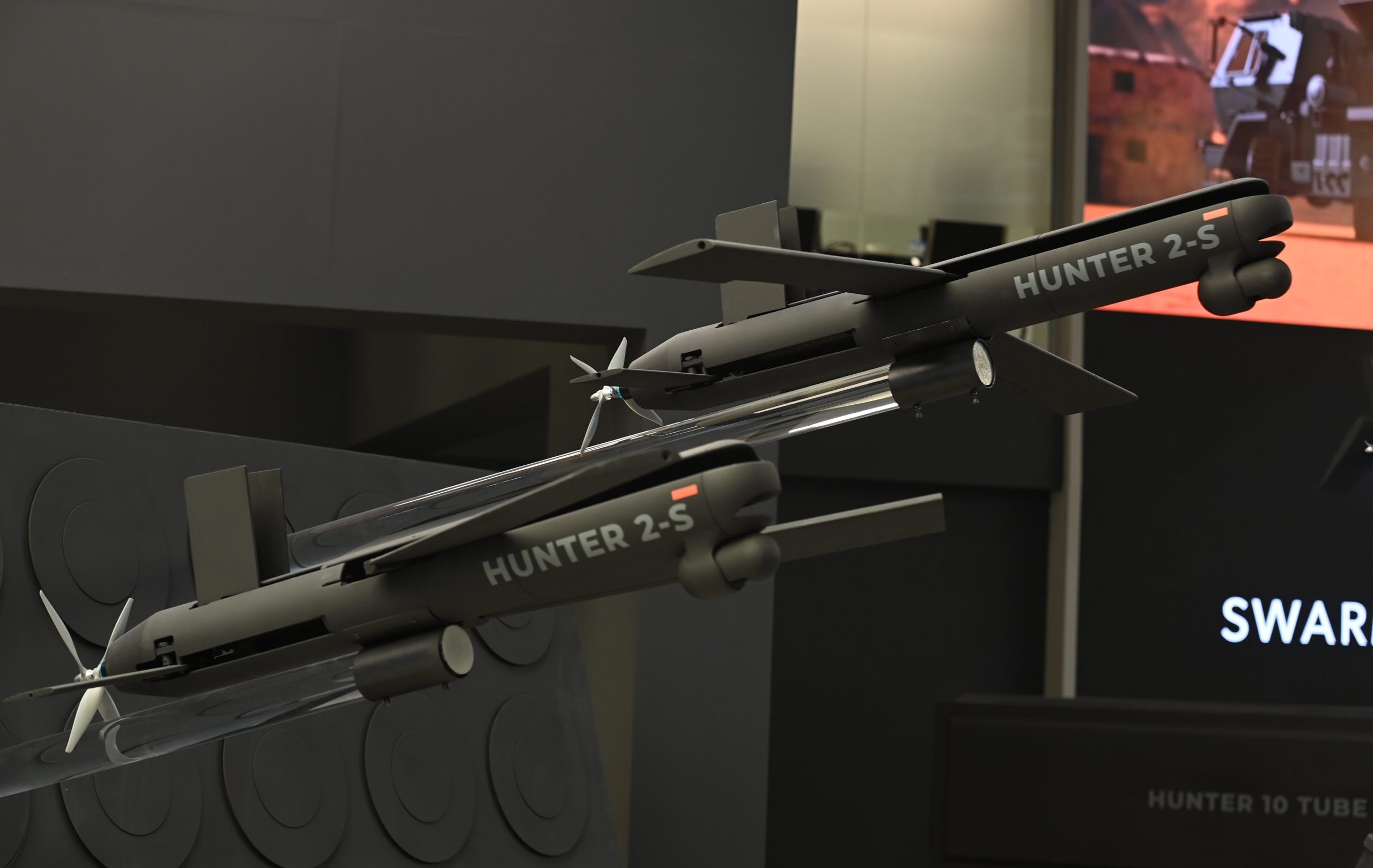
The Hunter 2-S drones, which are launched from the ground to ensure combat decisiveness, feature wings that fold out upon launch from a launcher tube, which can be installed on an armored vehicle or artillery, to then fly in a formation of up to 21 drones.
This swarm of drones can fly autonomously to perform coordinated missions that help confuse and overwhelm the enemy.
The maximum take-off weight of the Hunter 2-S drone is 2 kg, it has a maximum cruising speed of 80 km/h, a maximum altitude of 1,000 meters, an endurance of 30 minutes, and a communications range of up to 10km.
With a wingspan of 1.44m and a length of 1.25m, the swarming drones can all be deployed within 60 seconds, delivering their payload by striking the target and are capable of hitting multiple targets simultaneously.
One of the advantages of the Hunter 2-S aircraft is that it is cost-effective compared to the use of missiles in battles.
Looking to the future
HALCON has future development plans to increase the number of Hunter 2-S-class drones to more than 21 aircraft per swarm, the company also plans to test the first complete system of the Hunter 2-S by the next year 2023, with full production starting in 2025.
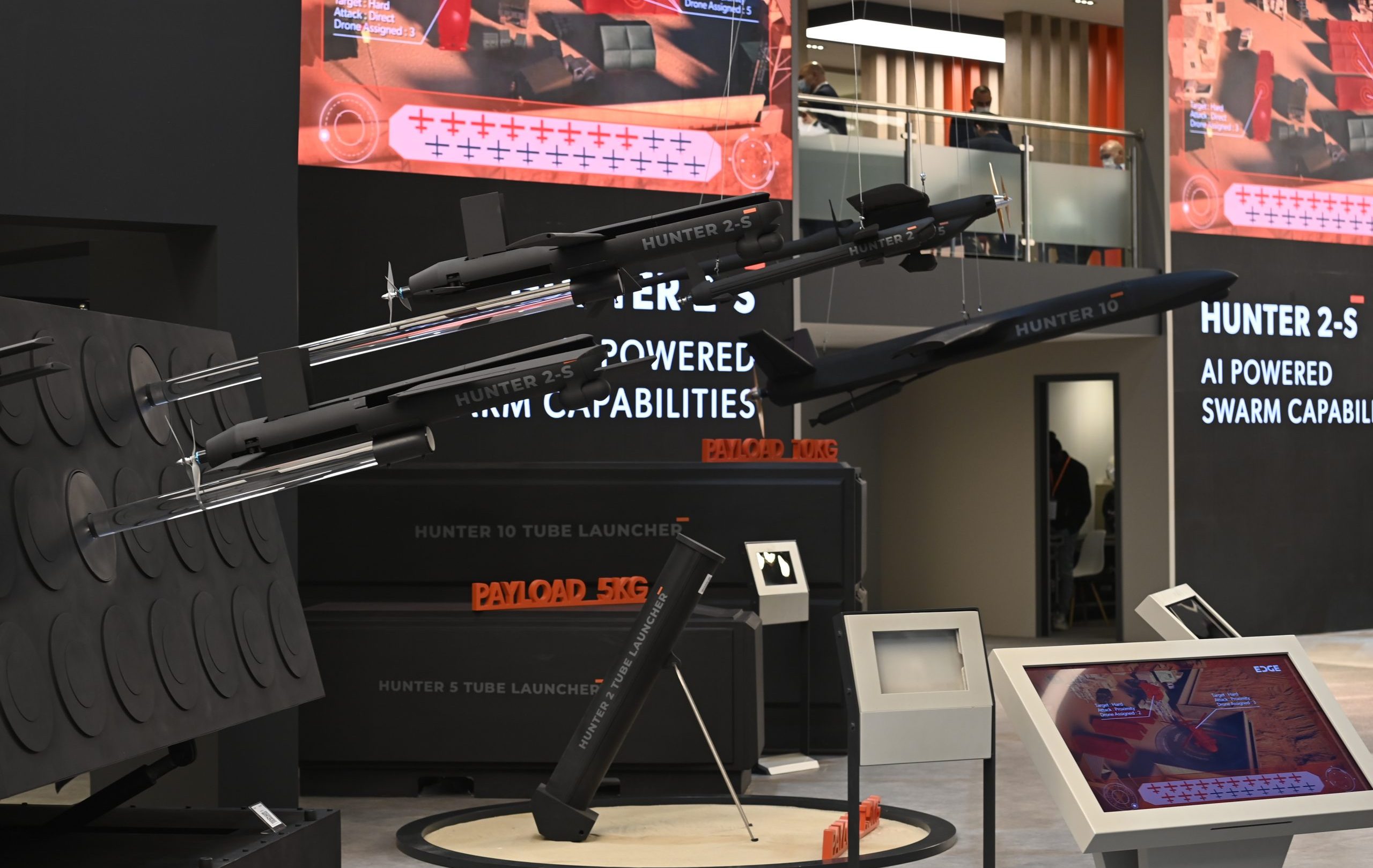
Advanced artificial intelligence technologies
Using advanced artificial intelligence (AI) technologies, these tactical drones share information with each other to maintain their relative positions, and that same AI can identify targets by their shape and density, gauge whether to attack directly or within proximity, and assign the relevant number of drones to the target.
Positioning the Hunter 2-S: a battlefield scenario
An armored truck fitted with the Hunter 2-S Tube Launcher stations itself 10km away from an enemy base. Once launched, the 21 drones unfold their wings, gaining altitude and reaching their cruising speed as they approach a joint-operations enemy base which has a rotary-wing aircraft, fuel tankers, armored vehicles, and multiple camps.
Two drones can be assigned to strike the rotary-wing aircraft, one drone per fuel tanker, two drones per armored vehicle, and the remaining drones to strike the camps. The strike can be executed simultaneously, autonomously, and with speed as one drone strikes the cockpit of the rotary-wing aircraft and another hits the tail.
The fuel tankers that are hit cause a bigger explosion which can cause raging fires. A drone can hit an armored vehicle, rendering the vehicle inoperable if not destroyed. Camps are then decimated as the fragmentation warhead spreads its payload.
The high levels of autonomy coupled with the simultaneous strike capabilities of the Hunter 2-S make it extremely difficult for adversaries to counter the attack, as their forces and base get crippled in a matter of seconds.
As the base is hit to devastating effect, intelligence can also be gathered using the Hunter 2-S’s camera. Images and videos of the successful mission can be analyzed for greater success in future missions, and a better understanding of the enemy.
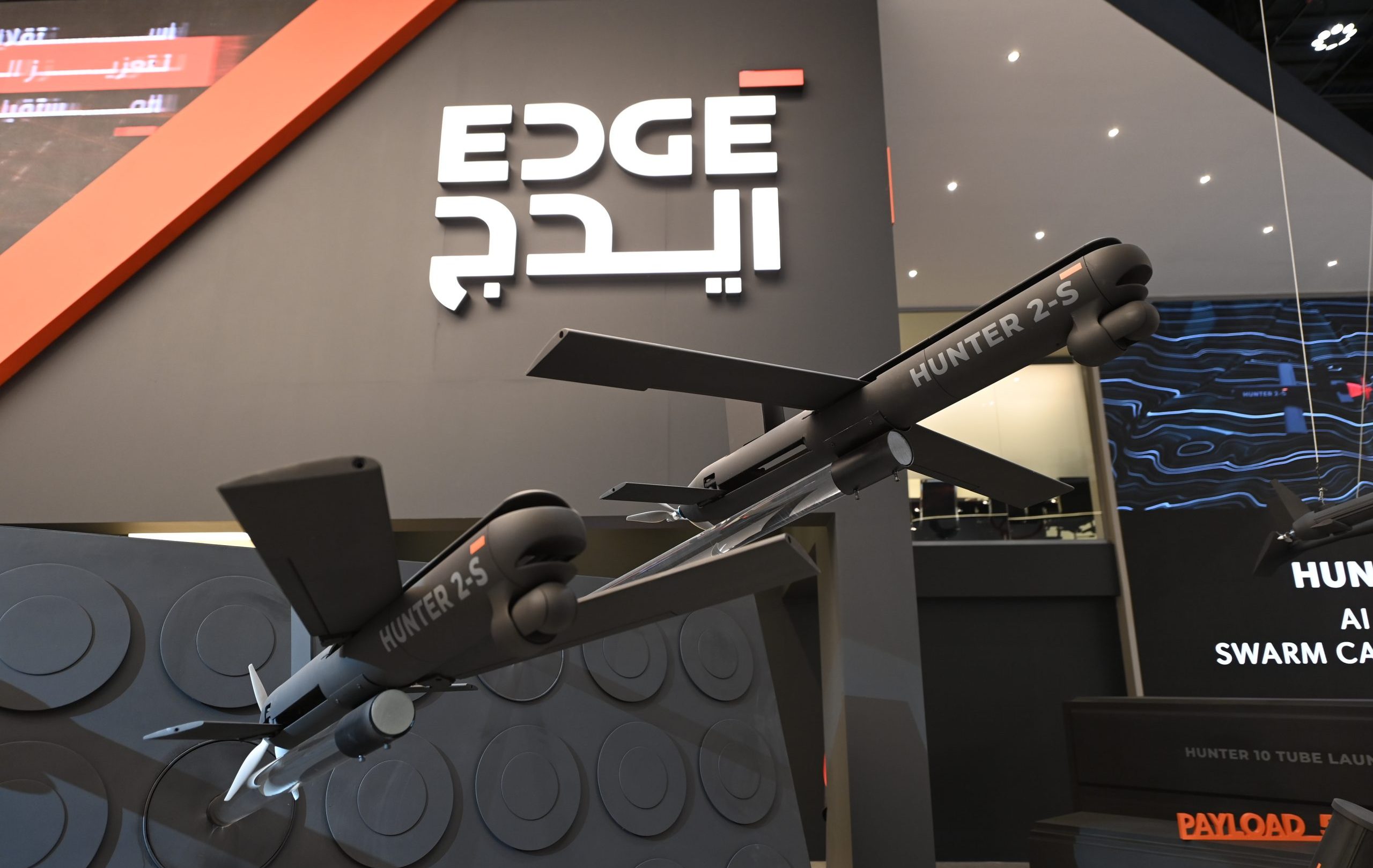
On the defensive side of warfare and peacekeeping, a vulnerable army convoy can have immediate and effective air cover in case of an ambush. Adversaries that employ guerilla tactics in any environment often target convoys transporting supplies, leaders, and diplomats. In a matter of seconds, threats that have surrounded a convoy and controlled the road can come under swift aerial attack.
Infographic
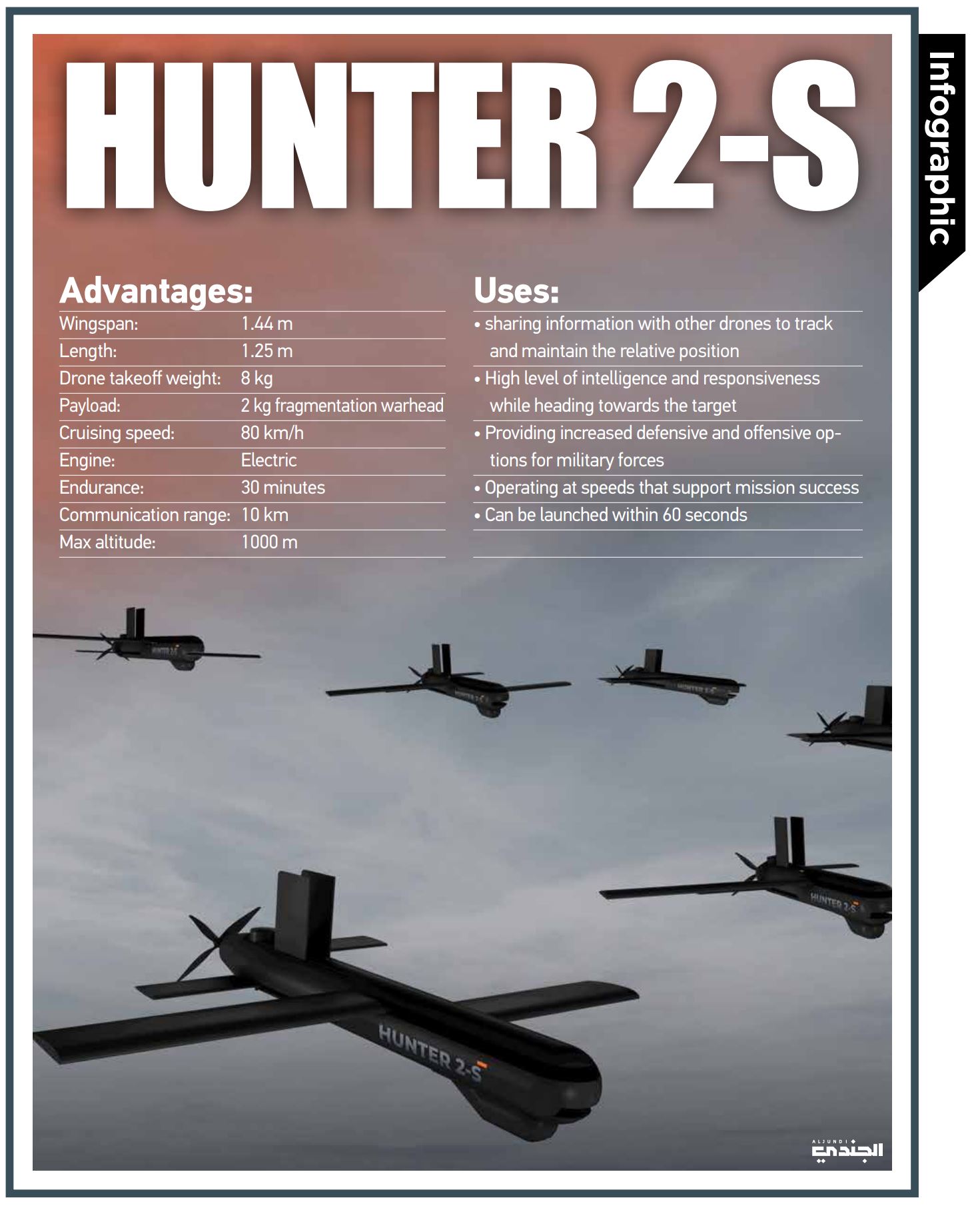
By: Ikram Ben dalla (researcher specializing in military affairs)






